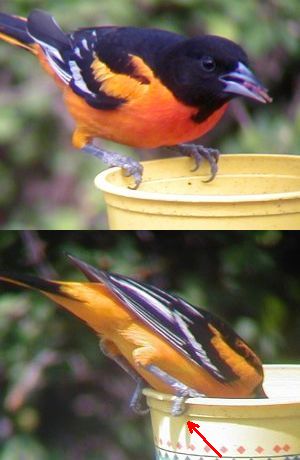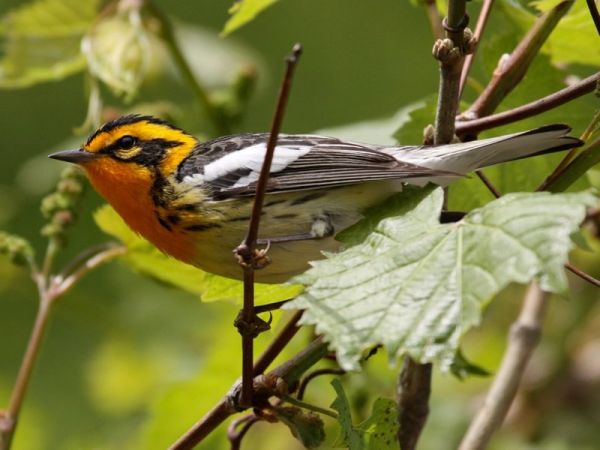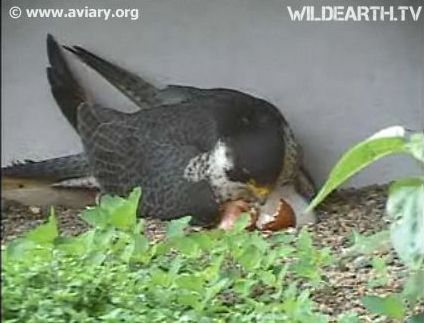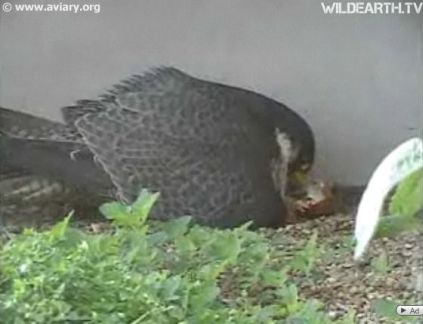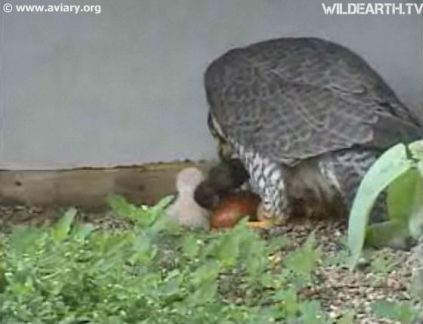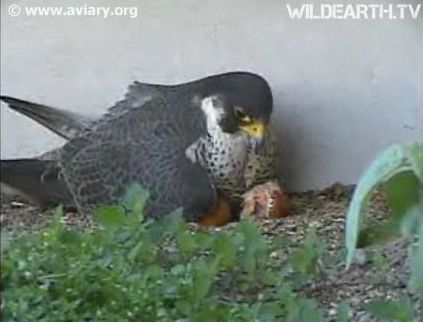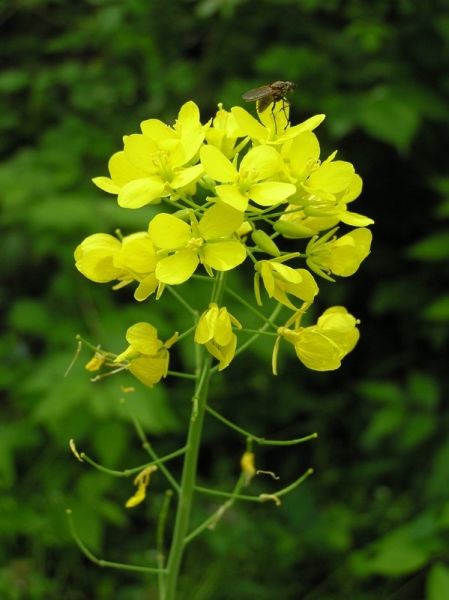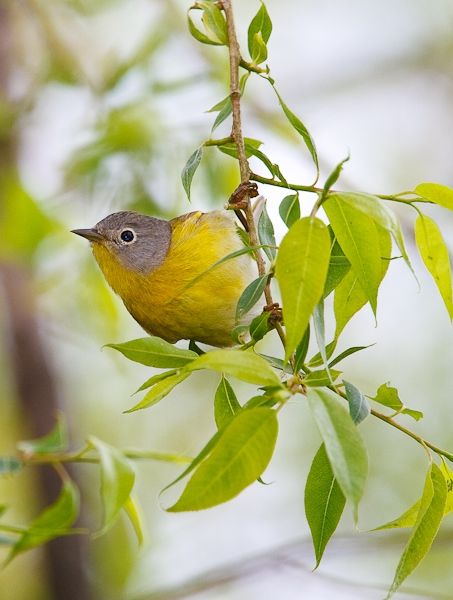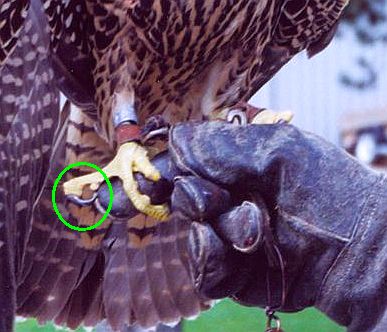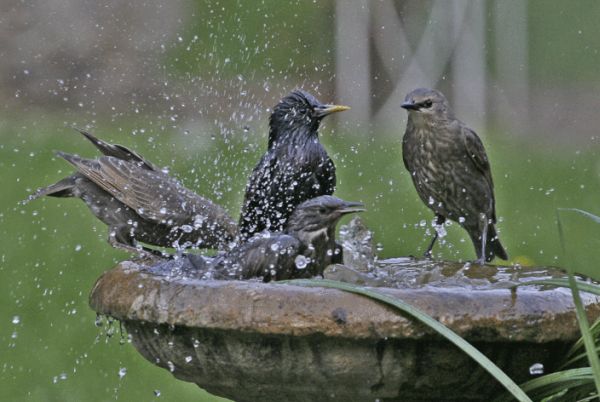
European starlings are common in my neighborhood.
They nest in the eaves of my neighbor’s house, having evicted the house sparrows who used that hole in prior years. It’s a form of weird justice that one invasive species displaced another in the cut-throat world of nest site competition.
This morning I learned that the starlings were successful. I could tell their first brood had fledged by the sound: churrrr, churrrr, churrrr, churrrr.
Fledgling starlings are a dull brown color with almost no variation except for a dark mask from beak to eyes. The first time I saw one I thought it was a new species until it begged from an adult starling. Churrrr, churrrr, churrrr. No doubt about it. That dull brown bird was a baby.
Young starlings begin to molt into starry winter plumage when they are only 4-6 weeks old so you’ll have to look now if you want to see them in their dull brown feathers. In the photo above, three juveniles are taking a bath with one adult (he has the yellow beak). Notice how dull the back is on the bird at left. You can almost see the mask on the bird at right.
Listen for the fledglings and you’ll find them easily. After a while the sound is annoying.
Churrrr, churrrr, churrrr.
(photo from Wikipedia under Creative Commons license. Click on the photo to see the original.)
p.s. June 30: The starlings have fledged their second brood in my neghborhood. I hear “churrr, churrr” again.
